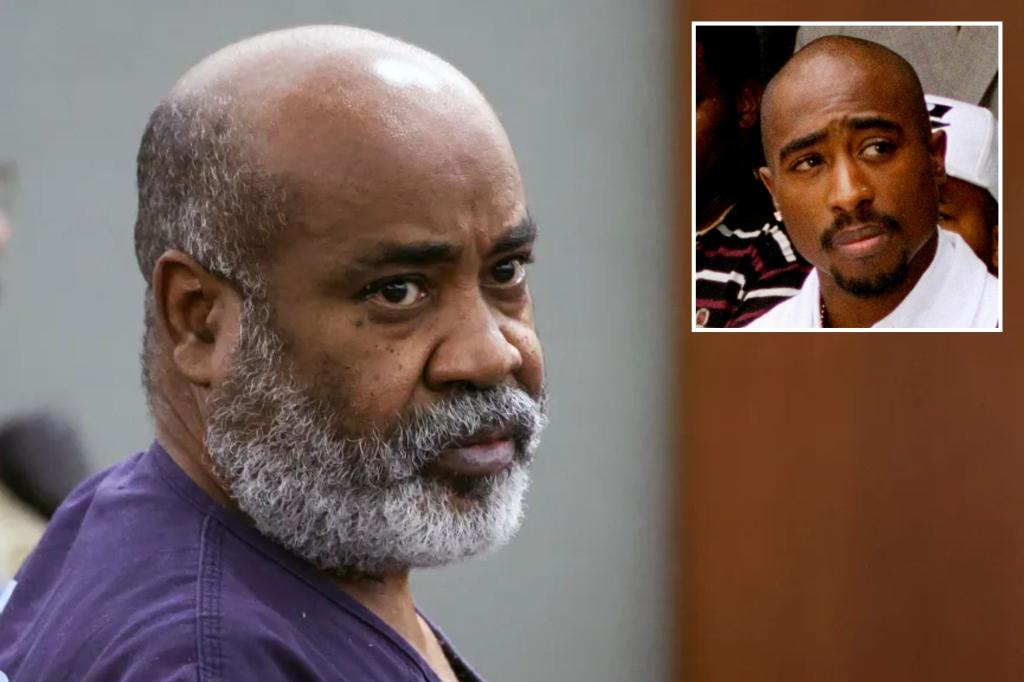The 1996 murder of Tupac Shakur, a pivotal figure in hip-hop history, remains a chilling unsolved mystery that continues to captivate the public imagination. Nearly three decades later, the arrest of Duane Keith Davis, also known as Keffe D, has reignited the investigation and brought forth a flurry of legal maneuvering. Davis, a former Crips gang leader, is charged with orchestrating the drive-by shooting that fatally wounded Shakur, a crime that has haunted the music industry and fans worldwide. However, Davis’s defense team has launched a robust legal challenge, seeking to dismiss the charges based on a series of alleged constitutional violations stemming from the protracted delay in prosecution.
The crux of the defense’s argument hinges on the “egregious” 27-year gap between the crime and the filing of charges, asserting that this delay has irrevocably prejudiced Davis’s ability to mount a fair defense. The passage of time has inevitably led to the loss of potential witnesses, the fading of memories, and the deterioration of evidence, all of which contribute to a compromised defense strategy. The motion to dismiss further underscores the lack of corroborating evidence directly linking Davis to the crime scene, emphasizing the reliance on circumstantial evidence and testimony that may be unreliable after such a significant lapse in time. Adding another layer of complexity to the case is the contention that immunity agreements, previously granted to Davis by both federal and local authorities in exchange for his cooperation in other investigations, have been disregarded. The defense argues that reneging on these agreements not only undermines the integrity of the criminal justice system but also casts a shadow of doubt over the legitimacy of the prosecution itself.
The prosecution, led by Clark County District Attorney Steve Wolfson, maintains that the evidence against Davis is substantial and persuasive. Wolfson points to Davis’s own accounts of the events leading up to the shooting, including detailed descriptions in his 2019 memoir, as key pieces of the puzzle. While acknowledging the inherent challenges posed by the lengthy delay in bringing charges, the prosecution argues that the weight of the evidence, coupled with Davis’s own admissions, presents a compelling case for a jury to consider. The prosecution’s strategy likely hinges on presenting a narrative that positions Davis as the mastermind behind the attack, even if he did not pull the trigger himself. This narrative may rely on establishing a motive stemming from the intense East Coast-West Coast rivalry that permeated the rap music scene at the time, a rivalry that allegedly fueled the conflict between the Bloods and Crips gangs and ultimately led to Shakur’s tragic demise.
The events surrounding the shooting itself paint a picture of escalating tensions and violence. A brawl at a Las Vegas casino involving Shakur and Orlando Anderson, Davis’s nephew, is believed to have been the catalyst for the subsequent drive-by shooting. According to Davis’s account, he procured a .40-caliber handgun and handed it to Anderson in the backseat of a car. Shots were then fired from that vehicle at Shakur and his associate, Marion “Suge” Knight, as they were stopped at an intersection near the Las Vegas Strip. Shakur succumbed to his injuries a week later, leaving behind a legacy of music and social commentary that continues to resonate today. Knight, who survived the shooting, is currently serving a lengthy prison sentence for an unrelated crime. Anderson, who was identified as a potential suspect early in the investigation, was killed in a separate shooting in 1998, further complicating the pursuit of justice in Shakur’s case.
The defense’s motion to dismiss throws a wrench into the prosecution’s efforts to bring closure to a case that has remained open for nearly three decades. The legal arguments presented by Davis’s attorney raise significant questions about the fairness and viability of the prosecution, given the inherent difficulties posed by the passage of time. The lack of physical evidence, such as the murder weapon and the vehicle used in the shooting, further weakens the prosecution’s case. While Davis’s own accounts provide a glimpse into the events of that fateful night, they also present a complex legal challenge. The prosecution must navigate the delicate balance of using Davis’s own words against him while acknowledging the potential unreliability of such statements made years after the crime.
The outcome of the motion to dismiss remains uncertain. The judge will have to weigh the competing interests of justice and fairness. If the motion is granted, it would represent a significant setback for the prosecution and potentially leave Shakur’s murder unsolved forever. However, if the motion is denied, the case will proceed to trial, where a jury will be tasked with sifting through decades-old evidence and conflicting narratives to determine Davis’s guilt or innocence. The trial, if it occurs, will undoubtedly be a highly publicized event, reigniting public interest in one of the most infamous unsolved mysteries in music history.
Regardless of the legal outcome, the case serves as a stark reminder of the complex challenges associated with prosecuting cold cases. The passage of time often erodes the availability of reliable evidence and creates significant hurdles for both the prosecution and the defense. The case of Tupac Shakur’s murder underscores the importance of diligent investigation and timely prosecution to ensure that justice is served and that those responsible for such heinous crimes are held accountable. The upcoming legal proceedings will determine whether justice will finally be served in this long-standing case or whether the mystery surrounding Tupac’s death will continue to linger, casting a long shadow over the legacy of a music icon.

